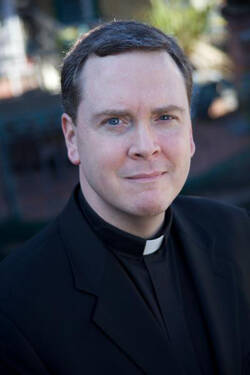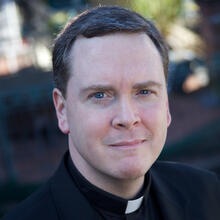I started out from the center of Rome. Passing close enough to touch the outer walls of the towering Baroque church dedicated to the founder of the Jesuits, I traversed the cobbled streets that wind their way through this ancient quarter, emerging at last into the Piazza Venezia, the frenzied circus where several Roman roads converge. I then passed beneath the balcony from which Benito Mussolini declared war on the United States in 1941. Just a few steps farther and I was in front of the memorial to King Victor Emmanuel II, the 19th-century king of Italy, a marble monstrosity that Romans liken to a wedding cake. I dodged the traffic and crossed a footbridge that spans the ancient imperial forum, the center of commercial and political activity in first-century Rome. From there I trekked up the Esquiline Hill, one of the city’s seven storied hills; at the summit, I spied at last my destination: the Basilica di Santa Maria Maggiore.
I looked and caught my breath, taking in the vista and all that I had just encountered. In one 45-minute walk, I had traversed 2,000 years of human history: empires, trade wars, world wars, monarchies long past. “What remains?” I thought. “What is left of all that history, all that earthly glory?” I then turned toward the basilica and answered my own question: “That. That is what remains: the church. When all is said and done, after 2,000 years of earthly triumphs and unimaginable tragedies, the church, almost alone, has survived antiquity and all that followed. Here, among the rubble of man’s broken dreams, there is the church, this church, specifically, that has stood here since 400 A.D.”
On the day I visited, as they have done nearly every day for 1,500 years, the people of God came to that church to worship the one true God, to tell the true story of human history. Masses were said, confessions were heard, hearts were healed. The church, I realized, is a survivor; it is, in fact, the only institution to have survived the outrageous fortunes of European history: two millennia of the comings and goings of statesmen, kings, emperors, madmen, poets, playwrights, artists, soldiers, terrorists, saints and sinners.
One of the questions I am most frequently asked by the news media is whether the church is still relevant in the modern world. When I was in Rome for the papal conclave, I would answer something like this: “Look around you. You and 15,000 other journalists have traveled here to cover this event. You’re not here to cover the Italian monarchy; there isn’t one. You’re not here to cover Italian fascism; that too is long gone. You’re certainly not here to cover the Roman Empire. You’re here to cover the church. Look around you. The question isn’t ‘Is the church still relevant?’ The question is: ‘What else is?’”
Now don’t mistake this for triumphalism. As Leonard J. DeLorenzo writes in this issue: “If the sickness of the world is its inability to love genuinely, then the church is intended to be the place where we learn how to love.... This is what the church is. And yet the sins of its members—all its members, though some more than others—keeps it from growing fully into what it is meant to be.”
True enough. So it might do us all some good to sit back and think about the big picture. And it still remains true that, in spite of everything—the partisan feuds, the lingering effects of scandal, the crisis of belief—the church endures and thrives. Amid all the infighting and the acrimony, in spite of all we have done and failed to do, new hearts are still won for Christ, souls are nourished, the hungry are fed, the naked are clothed. We are survivors. Thanks be to God.








